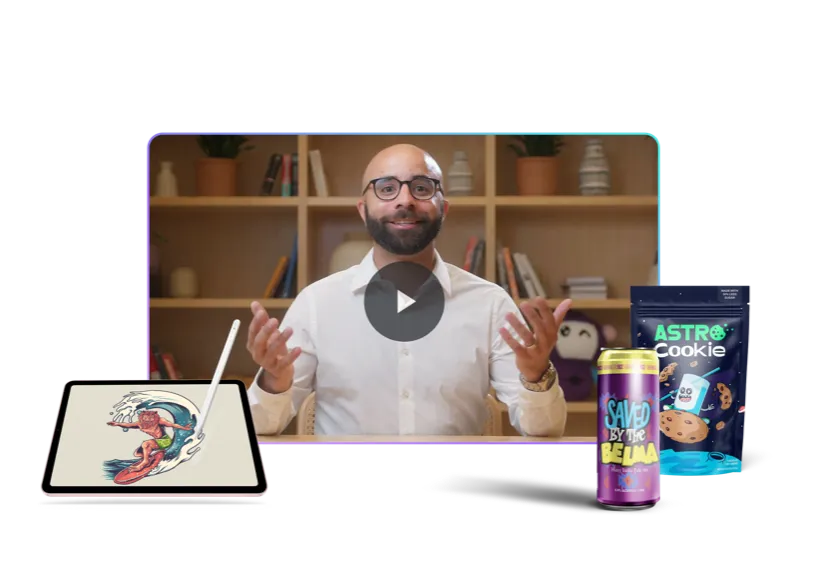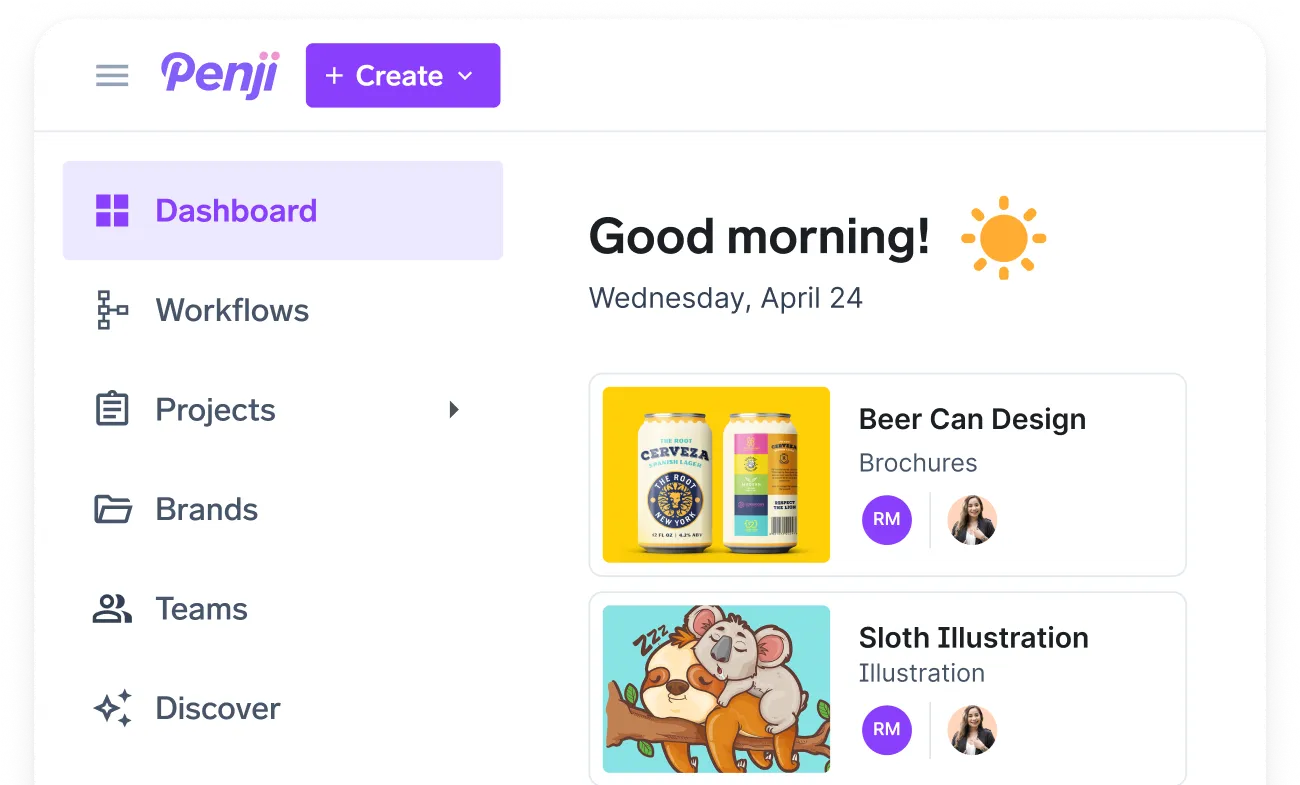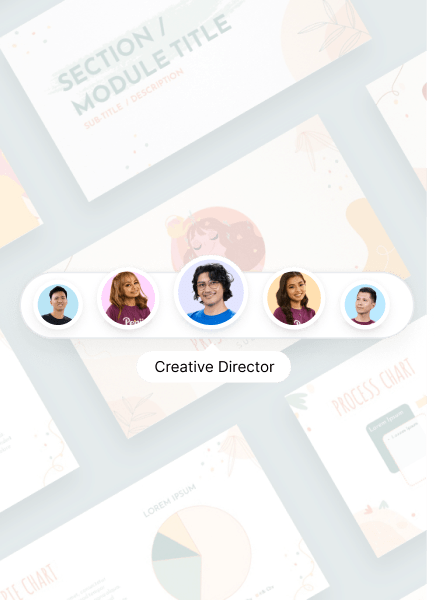![[Unified Purpose] Jackie Harrison-Jewell from The Couillard Foundation Ep. 17](https://penji.co/wp-content/uploads/2025/08/BLOG-IMAGE-Jackie-Harrison-Jewell-1-1.jpg)
Shannon (Host): Hello, everyone, and welcome to Unified Podcast, where we share inspiring tales of compassion, resilience, and community spirit. I’m your host, Shannon, Penji’s Partnership Coordinator, and I’m joined here today with a very special guest, Jackie Harrison-Jule from the Couillard Solar Foundation. Thank you so much for joining me today.
Jackie: It’s my pleasure. Thanks for inviting us. I really appreciate it.
About Jackie and the Couillard Solar Foundation
Shannon: Could you please start by telling us a little bit about yourself, maybe introducing yourself a little bit differently than I would and tell us about the Couillard Solar Foundation? I would really like to learn more about it other than my own research and so that the audience knows what you do there.
Jackie: Sure. Well, my name is Jackie. I’m the executive director of the Couillard Solar Foundation. I started with the foundation just over four years ago, and I come to it from a background in communications and design and project management and marketing. I met Cal, Cal Couillard is our founder. I met him a few years back when I was working as a consultant for another solar firm, and we hit it off and I started doing some work for them.
I have a lot of interests. I am an artist. I am a writer. I have a family. I live in Wisconsin. And I love the outdoors and gardening and conservation, going to parks, things like that. So working for the foundation where we have a goal of preserving our environment really is kind of a great fit for me.
We’re a small organization. We started about seven years ago. Our mission is to help Wisconsin nonprofits get access to solar. When we started, there was no such thing as the Inflation Reduction Act direct pay. So nonprofits didn’t get the same tax credit benefits as individuals or for profit organizations did when they wanted to put solar on. So libraries, schools, homeless shelters, they might have wanted to reduce their utilities and be green, but it was harder for them to do that.
So Cal Couillard sold a business and invested a big chunk of that into the solar foundation. And so we now run several programs that offer solar panels to nonprofits who want to put a solar array on their business. And then we sell solar technology in order to fund our grant programs.
Business Model and Solar Canopy Technology
Shannon: For the selling part, I’m assuming that’s been outside of the nonprofit. So does that look like going door to door or asking people? What does that look like?
Jackie: No, no. So Cal is an entrepreneur. And so he and his partner, Amr Arafat, designed an absolutely stunning solar canopy, which is a solar array on the ground, but it’s also a beautiful outdoor space. And so what we do is we sell that to anyone who wants to buy it. And then all of the proceeds go back into our grant programs.
But also a lot of the organizations that want to buy it are organizations like schools, parks, community spaces, churches, things of that nature. And so we actually have not done a lot of marketing in that way. It’s kind of word of mouth. We do presentations, we do talks like this where we talk about what we do. And of course, as part of that, we talk about the fact that we sell solar to support our nonprofit work. And people are just interested.
Another part of our mission is education, education about the benefits of solar and the benefits of going to renewable energy. And so it’s just sort of a natural fit.
Educational Outreach and Partnerships
Shannon: I’m so curious about the education part. So how do you get involved in that? Like, do you go to schools? Do you form partnerships so that you can be able to display yourselves in certain areas? How does that look?
Jackie: Well, we’re really big into partnerships. So we have contacts with organizations all across the state, and we are also part of several coalitions and collaborations and networks as well in the Midwest. We attend a lot of events.
For example, one thing that we do is in January, we go to the Wisconsin School Board Association Conference. And we have what we call the solar pavilion. We invite a bunch of nonprofits who are working in the clean energy field so that we’re available there to talk to school board members or school administrators about why they should consider clean energy for their schools.
We also, as we’re out and about talking to people about different things, people will contact me to do a presentation. I just did a presentation a few weeks ago to a library system. The library directors all have a meeting and I came in and did a presentation on solar for libraries. I’m going to be doing another one of those next week.
And then we have another series of events each year. We put on what we call a solar series. And once a month, we have an event that we host. And we market it to people. We reach out. We have it in different locations around the state. And it’s usually different themes.
For example, in April, we are going to be doing a presentation in Beloit, Wisconsin. And it’s about air quality and the work that’s being done to clean up the air and how renewable energy can help with that. Beloit last year was recognized as having the worst air quality in the country. And that’s tragic. You know, it’s something that we want to be able to help. And renewable energy and solar absolutely helps with reducing pollution, because, of course, the more solar that you use, the less you’re depending on fossil fuel to produce your electricity.
Addressing Skepticism and Misinformation
Shannon: For someone that maybe is hesitant for whatever reasons – maybe it’s related to propaganda, maybe it’s misinformation, whatever it may be – how do you kind of orient your education for that type of person or do you only go to people that are asking for you?
Jackie: We will, I always say, we’ll talk to anybody. I’ll go anywhere and talk to anybody. Because really education is as much for, it’s just as important to talk to people who don’t know much about solar energy or don’t know much about the reasons behind going to solar energy as it is to talk about people who are already advocates, right?
So I think the thing that we try to do is we try to reduce the amount of misinformation and you’re right there’s a lot of it out there. People a lot of times don’t understand essentials about solar like they might think that it pollutes more for example than fossil fuels, which is absolutely not true. But that’s a pretty common misconception that people are getting that it pollutes more to create solar panels than the power that they would produce, which is absolutely false.
So one of the things that we do is we sort of talk to the people wherever we’re going to go and do a talk. We talk with them beforehand about what information they would like to have. And then we sort of curate our information that we provide based on that.
But it usually involves talking a little bit about how solar works a lot of times, describing for people how a solar array works and what it means when a solar array is attached to the grid or off grid, which means that it’s just operating with batteries. Talking with people about costs associated with solar. People a lot of times think that solar is extremely expensive and it is an expense. It’s an investment. But with tax credits and with various rebates, the prices have come down, have dropped like ninety seven percent in like the last ten years.
And then the other thing that people have, like I live in Wisconsin, so in Wisconsin, there’s winter. Like, for example, today is a pretty dark day and they think, oh, well, then solar isn’t any good for us here because we don’t have enough sunlight. Well, we absolutely have enough sunlight. You always have sunlight, it’s just you don’t see it.
Solar works in the winter. Solar cells are what’s called solid state electronic cells. And so when it’s cold, they work better than when it’s hot. And also, solar works by having light. I always use this example of my hand as the panel, right? Light hits the solar panel and starts to make energy, right? Well, we advocate for bifacial solar panels, which produce power on the front and on the back. So when it’s snowy, the light hits the snow and bounces up and hits the back of the solar panels and starts producing energy even if the top is covered in snow.
So that’s kind of one of those things that we are reassuring people that when they invest in solar, that it’s a good investment for them. The other thing is that solar arrays, solar panels themselves are warrantied for twenty five years. And they can work for forty or fifty years. There’s solar arrays out there now. They were installed fifty years ago. And they’re still working. Of course they’re not as good as the ones now because there’s been a lot of innovation since then. But they work. It is a really well researched, safe technology that I think people just, for some reason, still feel like it’s new or still feel like it doesn’t have value for them. But we’re just out there trying to help people understand that that’s not true.
Addressing Environmental Concerns
Shannon: I honestly ask out of curiosity because sometimes I want to rebut something that a family member sends me. I just the other day had a video sent to me about the amount of oil that goes into making a solar panel.
Jackie: That is misinformation. I won’t say that it’s put out there purposefully, but I think people do misunderstand. And it’s not true. The solar panels are absolutely better for the environment than fossil fuels, period. Even including natural gas, which everybody says it’s natural, but it’s still gas. It’s still a fossil fuel.
Solar panels, solar arrays do not emit anything, they just work clean. The power that they send to the grid is, granted, they only produce power when the sun is shining. So it’s not like a consistent thing, like maybe hydro where it’s a dam or something where it’s always working. But with battery storage, and especially these days, battery storage, the research on battery storage has come so far and prices on batteries are coming down and batteries themselves are being much more efficient, and using materials. There’s a lot of research being done to use materials that are much more easily available and not toxic.
So the entire industry is really moving forward in ways that I think are going to be ultimately really, really helpful to everyone because of course our need for electricity is also growing. All those cars and AIs and data centers and all of that is just going to have more and more need for electricity.
Financial Benefits and Return on Investment
Shannon: The power, there’s no cease on how much energy we’re using. If anything, it’s becoming more. So it’s great to have more efficient ways that aren’t harming the environment. And in order for people to even want to do that is education. I think especially people love, if they don’t care about the environment, people love saving money. So investing in something that saves them money is…
Jackie: Absolutely, absolutely. And the return on investment for a solar array is typically, well, it really depends on the area and how much you’re paying and all of that. But it’s typically in the seven to ten year range, which is pretty good. And the other part of it is that I don’t know how it is across the country, but in Wisconsin, we have seen rate increases pretty much every year. We’ve seen our electrical rates go up. And so if you invest in a solar array, that payment is going to stay the same. Even if you had to finance it, that payment will stay the same. Meanwhile, your rates are going up, but you’re not having to pay those higher rates. So you’re going to see a greater, greater savings all along.
But the savings, the benefits even go beyond saving money. And for a lot of people, that’s really important. But it’s also stability of the power grid. In Wisconsin, we have a lot of rural folks. And the power sometimes can go out for a couple of days. Well, you’ve got those refrigerators that have all that food in there. You’ve got important things that you need electricity for. And if you have a solar array and battery backup in a rural area, you can ride out a lot of that instability in your power grid and be safe for your family and safe for if you have elderly folks who have electrical medical devices or whatever.
Success Story: Habitat for Humanity
Shannon: I love knowing the different types of benefits to bring to someone that maybe is that type of person. So it’s wonderful to know that there’s all these different options. So I’m sure that you deal with this often. I have a little story for you if you don’t mind.
Jackie: I would love a little story.
Shannon: In the last seven years, it’s approaching three hundred non-profits around the state. We’ve helped them get solar arrays, more than fourteen megawatts of power on the Wisconsin grid. And we do a survey afterwards and ask our grant recipients to tell us, like, how has this helped them? How has this array helped them?
We did a survey with the Habitat for Humanity in Milwaukee. They put a solar array on their warehouse. And in their reply to their survey, they said that they had been paying eleven thousand dollars a year for their electricity, for their warehouse. Now that, a lot of times people are like when I tell this story, people like eleven thousand dollars. But a larger organization or a business, they’re going to have a really big electricity bill.
After that array installation, they went down to three hundred dollars. And I’m not talking about three hundred dollars a month. I’m talking about three hundred dollars for the year.
Shannon: That is insane. That makes a huge difference.
Jackie: You talk about nonprofits and the first thing everybody thinks is that they have to budget carefully and they have, well, you’ve got that money coming in. Think about your school. If your school has a solar array, that’s more money for curriculum. It’s more money for teachers. It’s more money for more programs for the students. And it’s a better use of the public’s funds.
And then when you incorporate solar on schools, you can also incorporate it into the curriculum. So you’re teaching your children about very critical jobs where there’s going to be the need for people working in clean energy and specifically solar is just going to keep growing because unlike some jobs, you cannot outsource solar jobs. They have to be on site to build these arrays and to work with people to make this happen. This is a good job, a good paying job too.
Word of Mouth Marketing and Community Impact
Shannon: It’s wonderful to be able to show those results too. That is so cool because an energy bill does suck the life out of someone’s bank account. And especially if you’re such a large organization for non-profits specifically, there are so many that need to save money constantly because it is unfortunately not something that is properly funded.
Jackie: And you can’t turn the lights off. I mean, you have to have your utilities. So this is a way, we’ve really have seen our grant recipients, and this is another reason why we don’t need to market too much because word of mouth, people hear about what we’re doing and they’re like, I love what you’re doing. I know a church or I know a school, they’re finding people to bring to us.
I think that this is something that organizations, whether they’re nonprofits or for-profits, need to be looking at for themselves, for their bottom line, and also for the impact that they make on their community. We talk a lot of times to organizations, even for-profit organizations, who really are concerned that their customers or their audience or their community is looking for them to be greener, is looking for them to make choices that are going to help the community overall.
And so even if we’re talking with a business who’s maybe interested in buying one of our canopies, they come to us and they’re like, I want to show my customers, I want to show my community that I am thinking about the future, that I’m thinking about my community and taking steps to use less fossil fuels and to have cleaner air, all those things.
And so this goes beyond just being like a tree hugger kind of thing. It goes into all sorts of sustainability and resilience concepts that people are really starting to think a lot about.
Long-term Environmental Impact
Shannon: Do you have any long-term studies that are related to specifically pollution maybe or an area in which is affected by that because the area that you were talking about earlier is one of the worst in the country. Is there anything that you can see like improvement for that based off of how many are being used?
Jackie: Actually, there’s a lot of studies that are being done in terms of air quality. I don’t really have a lot of the details at my fingertips. I could actually send you some links to some groups and some sites that are working on this. There’s all across the country, there’s a lot of work being done on the concept of resilience and the concept of creating these areas where, it’s solar plus batteries, but it’s also working with the community to provide spaces and support for those areas that are really hit the hardest with climate change.
So that includes areas maybe where in the wintertime like here in Wisconsin in the wintertime if it gets really really cold like a couple of, not this last winter but the winter before they had rolling brownouts because so many people were wanting to heat their homes and so they were taking, they were reducing people’s availability or even shutting off their electricity for a while so that they didn’t have to shut down their grid. Well, if you have more solar on the grid, that becomes less of an issue.
In Texas, a lot of people went to solar after those really bad storms a few years back. A lot of people went to solar. And then the next time they had a bad storm come through in the winter, their grid didn’t go down because so many people had gone to solar and solar battery. Putting more solar on the grid really does stabilize the grid for people.
And then in urban areas, if you put in like solar arrays and you add more shade over the concrete and you plant more trees, put in more solar, it makes the entire area cooler.
I don’t have like specific things. I have articles that I’ve read and a variety of stuff that I can offer.
Resources and Educational Materials
Shannon: That’s even better because I think it’s easier for people to digest what you just said rather than maybe looking at a bunch of statistics. Me, I love statistics, but I also love what you said.
Jackie: I like statistics, too. And I’m kind of a geek about it. I like to get into reading about all the articles and research that supports why clean energy is so good. There’s actually a couple of organizations if people are interested. There’s the National Renewable Energy Laboratory or NREL that has a lot of information on their site that’s just freely available to the public. And then there’s the Solar Energy Industry Association, SEIA, that also has like statistics state by state and has information about benefits of solar and different kinds of solar and things like that. All of that is just freely available to anybody who goes to the site and wants to look in their resources. They don’t gatekeep.
Shannon: I appreciate that. I think that, one, for all the audience, thank you, guys. I hope that you check these out because you should. And I think that those are just useful resources. I love free knowledge because hopefully when people investigate things that they may have misinformation on, they can access these sources and understand things a little bit better because I think that’s everyone’s kind of worry about misunderstanding climate change is that there’s so much misinformation out there. And it’s very sad because the more misinformation that’s out there, the less people are caring about the environment and the future of the world. It’s hard to know who to trust.
Building Trust and Providing Support
Jackie: Sometimes people will contact us and they want to ask us questions just even about solar arrays. And now I will preface this by saying we work with a lot of wonderful installers. We work with over sixty-five installers across the state of Wisconsin and we have some wonderful installers. But sometimes people get nervous and maybe an installer talks to them in language that they don’t understand. So they’ll actually call us and say, hey, I had a question about this or question about that. We’re happy to answer that.
But I know that sometimes if it’s about a technology that maybe people don’t know what they don’t know. And there’s no reason why everyone should have to have a technical level, high level technology knowledge of a technology that is not their area of expertise. And so having a trusted source, having someplace they can go where they know that the information is good is always good.
Shannon: I think that when someone doesn’t know something about an entire subject, they might be very wary about it, especially what you said. People don’t know what they don’t know. They don’t know what questions to ask sometimes because they don’t understand it entirely. And of course, I understand renewable energy, but I don’t understand how a solar panel works technologically. I’ve seen the diagrams, but I don’t understand how someone builds it, how it works, if it’s installed correctly. And so it’s nice to have that information out there to be able to… It’s also important that it’s digestible for the average person as well.
Making Technology Accessible
Jackie: That’s true. And any technology can be prone to jargon and talking about tech, mentioning megawatts or kilowatts. What is a megawatt? What does that mean? I do have a little, a megawatt will power roughly three hundred homes in Wisconsin. That’s kind of a simple equation for people. It varies from state to state because different states have different types of solar on their power grid and stuff. But you can look that up. You can go to that SEIA website and they have a state by state report and it says, hey, this is how many megawatts of solar in your state. And here’s how many homes are powered by that. And here’s how many jobs there are in your state.
I think it’s just important for people to start to get comfortable with this idea and not think about it just like something for rich people or just something that it’s a scam or that it’s something that isn’t valuable for everyone. So much work is being done now to make sure that clean energy, renewable energy, is being put in places where it benefits people who maybe can’t afford, maybe they don’t own their home or maybe they can’t afford a solar array and that’s okay. There’s other aspects of it, there’s solar farms where large arrays that are put in that produce additional electricity, clean energy, but it doesn’t cost the people who benefit from it in that town anymore. They just know that their power is coming from a cleaner source.
Addressing Cost Concerns
Shannon: That’s wonderful. And I think that that is definitely something that’s very reassuring for a lot of people, because I think that cost is the first worry that someone has. I mean, if they believe in all the other benefits, I think that is definitely it other than if there’s a policy difference or people have misunderstandings about certain things, I think that’s obviously probably the first thing that you deal with. But then after getting past all of those things, I think that cost is always the biggest worry.
Jackie: It is very much for people. And it is important to remind people too, though, that say, for example, you have been thinking about a solar array. There is a thirty percent tax credit that is for homeowners. It’s for business owners. And now it’s also right now available to nonprofits.
So say it costs you fifty thousand dollars to put in a solar, which is probably on the high end, but say it cost you that, makes the math easier for me. Say it’s fifty thousand dollars. Then that thirty percent, you’re going to have fifteen thousand dollars right off the top. That’s going to come off that. And so then it’s thirty five. Then most states have like rebates and advantages that you can also take advantage of in your state. So it brings the cost down even more.
And then you look at your utility savings each month, you’re going to have that savings. So if you decide to finance with a credit union or a green bank, some banks have programs for financing clean energy. And your utility bill is reduced and you may have this payment, but because your utility bill is down, it kind of washes out, right? So you’re paying less on your utility bill, a little bit more on that financing, but in the end, you are going to have that financing paid off. And then after that, you’ve got energy from the sun every day.
Closing Thoughts
Shannon: It’s such a great thing to have access to. And I hope that this podcast maybe even educated people a bit more about this. Because I am a big advocate for renewable energy. And I’m really happy that I think that knowledge first and foremost is the best way of getting people on board with it. And I think that misinformation is unfortunately such a big issue that a lot of people don’t understand it well. But if they’re willing to understand it, that’s so great. And I commend you for doing this and sharing it because I think that it is something important to spread more. So thank you so much for joining me.
Jackie: Thank you so much for having me. I really appreciate it. And I did want to say, I love what I do. And I feel like every day when I go to work that I’m doing something that is helpful and important. And that can really, that makes you feel good about your life, right?
Shannon: No, exactly. You should love what you do. And that’s really great that you’re able to do that. And thank you so much for being passionate and excited about what you do and sharing it on this podcast. I really appreciate it. And I hope that others will listen and be excited about it too, and maybe get involved.
Jackie: I hope so too. That’d be great. Thank you so much again.
Shannon: And thank you everyone for listening again. Don’t forget to check out some of the links that Jackie mentioned or the websites and also check out Couillard. That would be great. And thank you so much. Have a lovely day.Jackie: Thank you.
About the author
Table of Contents
- About Jackie and the Couillard Solar Foundation
- Business Model and Solar Canopy Technology
- Educational Outreach and Partnerships
- Addressing Skepticism and Misinformation
- Addressing Environmental Concerns
- Financial Benefits and Return on Investment
- Success Story: Habitat for Humanity
- Word of Mouth Marketing and Community Impact
- Long-term Environmental Impact
- Resources and Educational Materials
- Building Trust and Providing Support
- Making Technology Accessible
- Addressing Cost Concerns
- Closing Thoughts














